1.17 Giovanni Fabrini and Self-Study
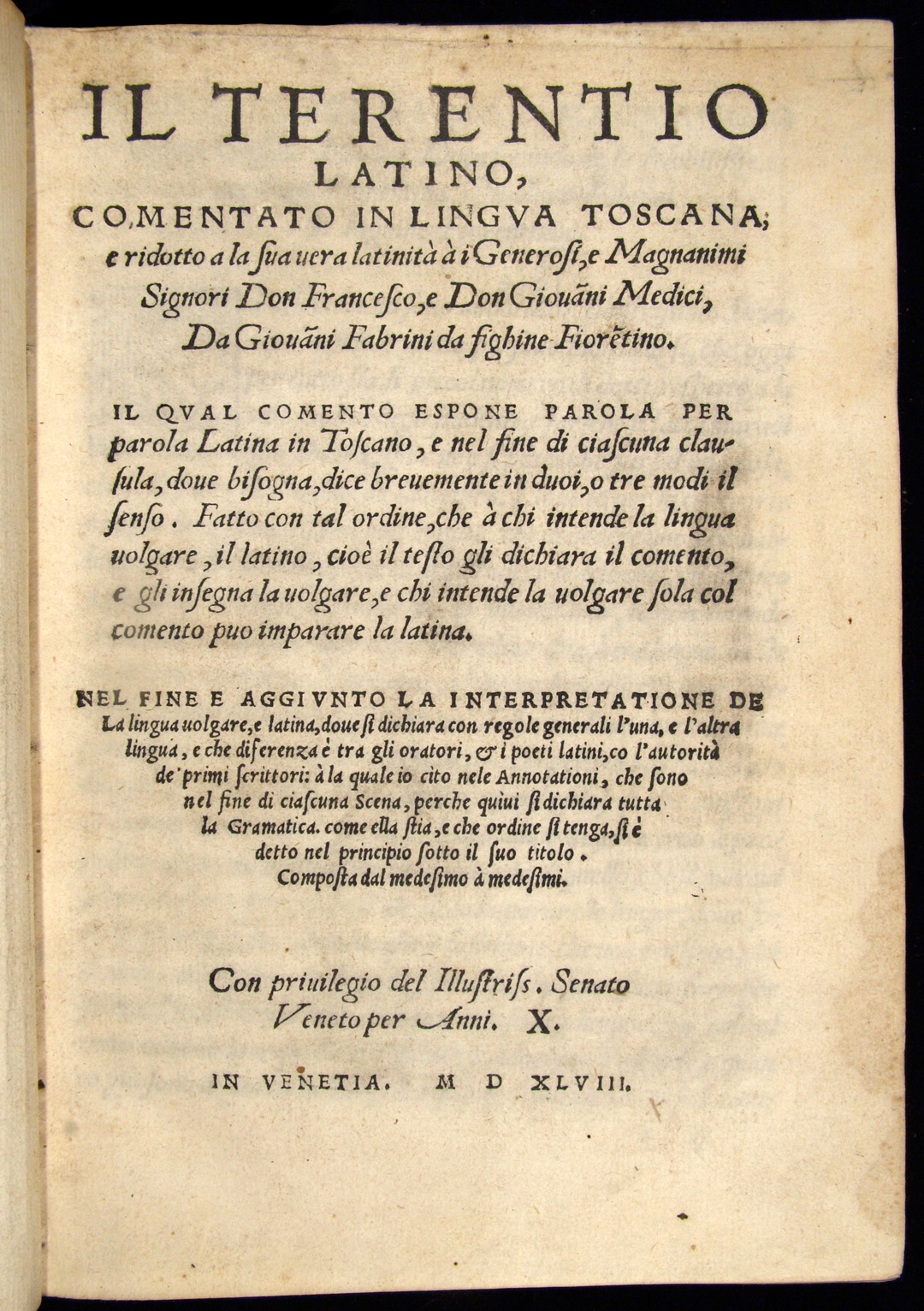
The second half of the sixteenth century saw a proliferation of self-study manuals, many of them with title pages that offered far more than even their authors could have believed possible. Giovanni Fabrini (1516-ca. 1580) dedicated Il Terentio Latino to Cosimo de' Medici in 1548; it was reprinted at least ten times before 1594. He claims that the book is a text, a translation, a commentary (commento), and a bilingual grammar all in one.
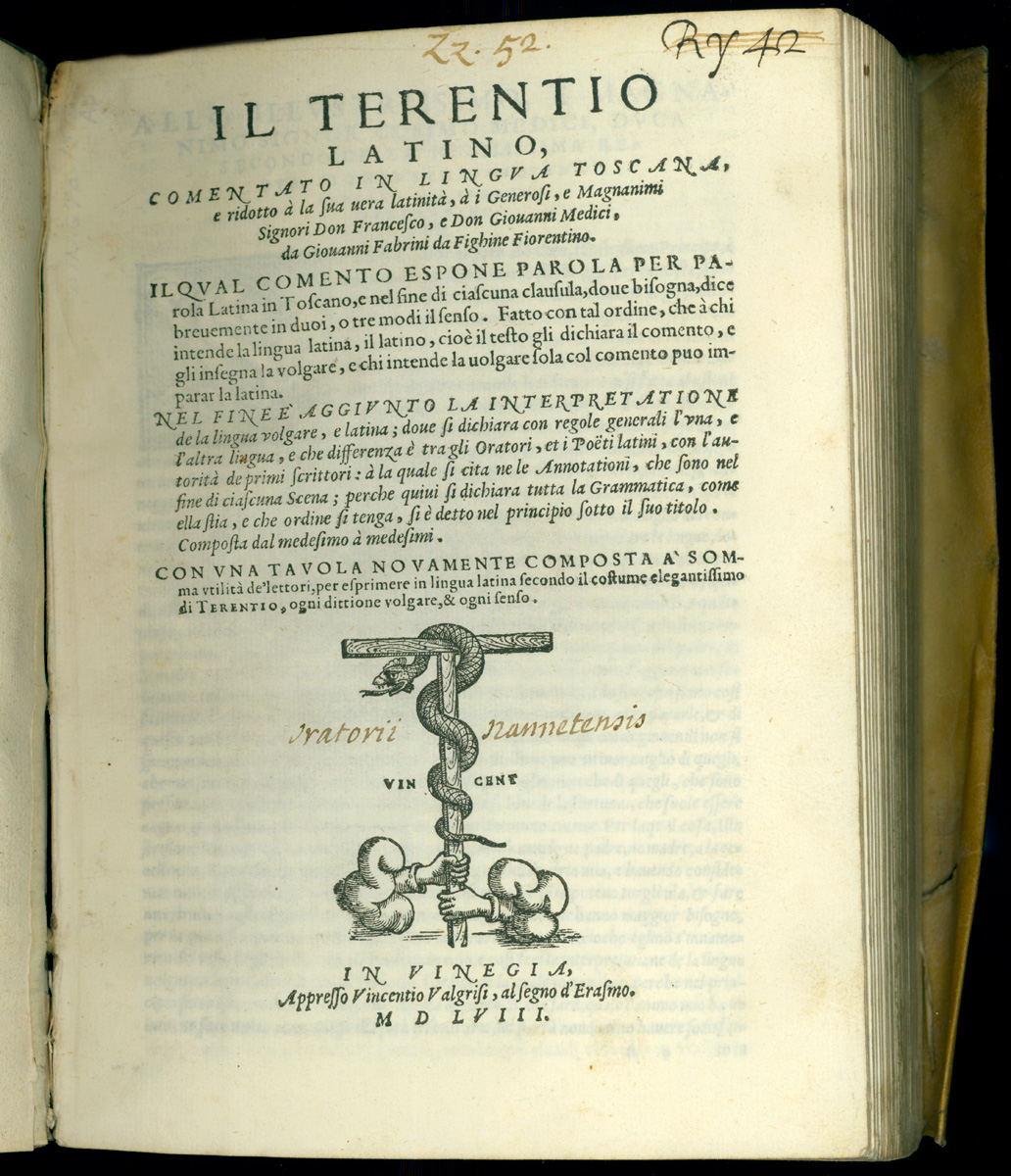
From 1551 onwards, some editions also included Fabrini's compilation of the usages (osservazioni) of Terence, so the book grew in ambition from a treatment of a single author into a grammatical and compositional manual that proposes Terence as the best model for Latin of all sorts and for Tuscan prose and poetry as well. The list of contents on the title page stressed these broad ambitions, saying the volume includes: word-for-word commentary on the plays and clause-by-clause Tuscan paraphrases in duplicate or triplicate; a grammar of noun and verb rules for both Tuscan and Latin; vocabulary notes comparing Terence's usage to that of other poets and to prose authors; and lastly, a usage index to Terence which allows the user to find an apposite phrase for any topic. (75)
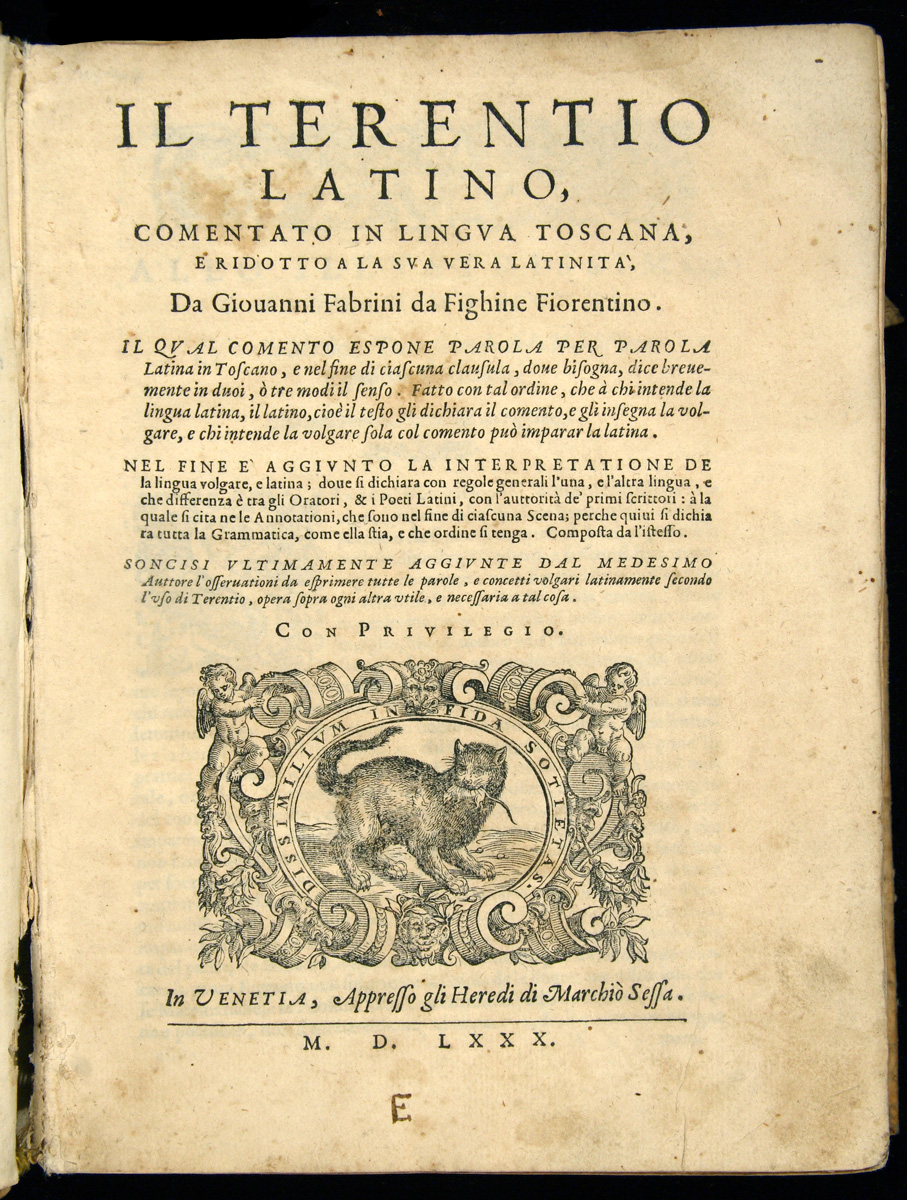
All of these study aids actually appeared in the book, along with a very thorough word index to the plays. But it is less clear that the results Fabrini claimed for it could have been achieved: "All this is arranged in such an order that, for anyone who understands Latin, the Latin here (that is, the text [of Terence]) will explain the commentary and will teach him the vernacular; and so that anyone who understands only the vernacular will be able with this commentary to learn the Latin." Since the book was never published outside Italy, however, we must take the first of these processes to mean that the Latin of Terence could inform and improve writing in Tuscan, not actually teach the language to foreigners. The author also claimed that his book contains "an interpretation of both the vernacular and Latin in which are declared the general rules of both languages." (76) The ultimate goal was that the reader should be able to "express any and all vernacular words and ideas in good Latin, according to the usage of Terence." (77)
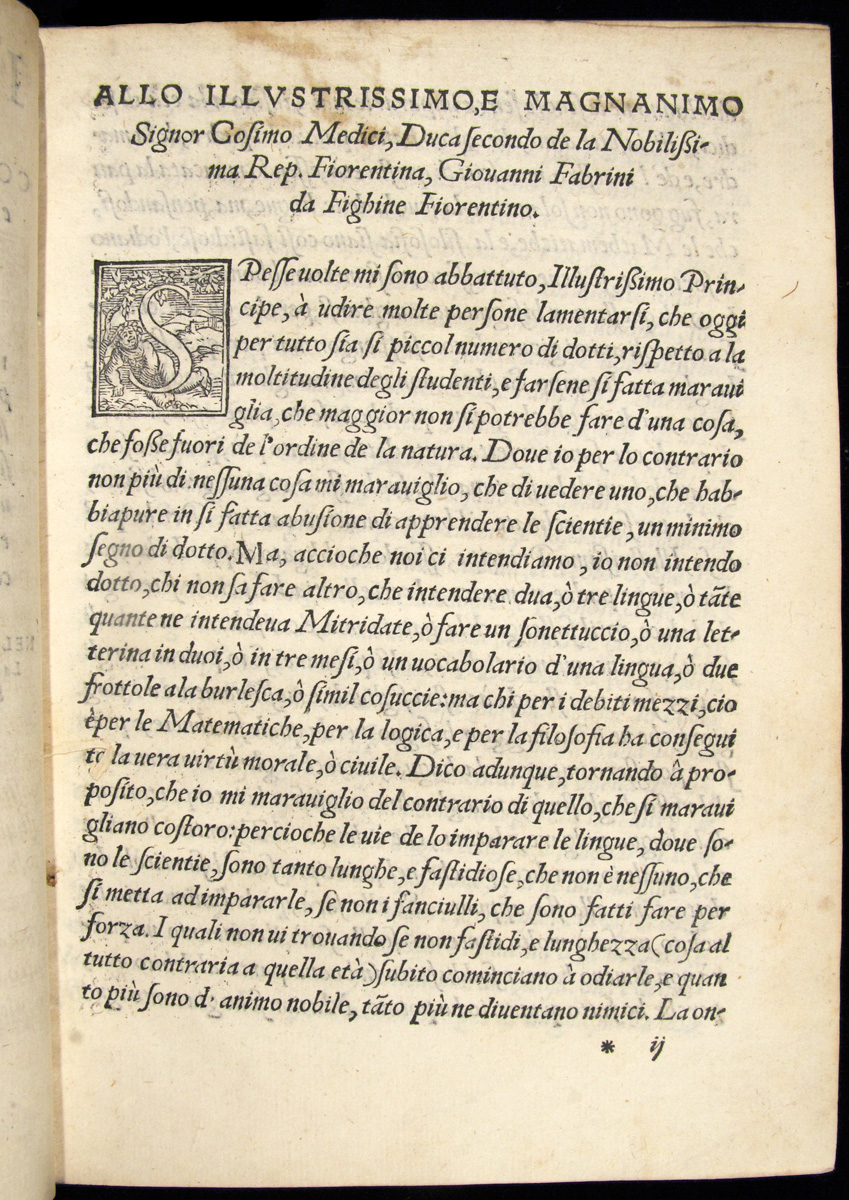
Fabrini made all these claims on the title pages of early editions. They were explained further in a preface addressed to the Medici prince. It is no wonder, Fabrini wrote, that there are few learned men, since traditional schooling in languages seems designed to repel the student from the start. Fabrini designed his book instead to encourage Cosimo's two sons to find language study easier and therefore to get excited about other sorts of learning. The commentary in Tuscan ensures that they will be able to understand the explanations of the Latin base text without having to decipher more Latin and it avoids the further bad practice of making them read barbarous modern Latin. It obviates even the ancient commentaries. The young princes were to concentrate instead on the pure diction of Terence.
Fabrini's work was imitated in Spain by Pedro Simón Abril (1530?-1595) who proposed a bilingual Latin/Spanish Terence as a way of learning Latin through translation. A first edition appeared in 1577, and it was revised in 1583 with an improved Latin text based on that of Gabriele Faerno. Abril acknowledged his debt to Fabrini in a dedicatory letter to young Prince Ferdinand of Austria, son of Emperor Ferdinand II, for whom he claimed the same solicitous care as Fabrini had displayed toward the Medici princelings. Abril made far fewer claims than Fabrini, however. He was mostly interested in helping Spaniards learn Latin; if they could also improve their vernacular style, that would be of benefit, but it was not the goal of reading Terence. On the other hand Abril offered an entire reading list of texts he says are best studied in bilingual editions: Terence, to be sure, but also, Aesop, Cicero, and the catechism of Pius V. Abril's intent was to make these classic texts, which every educated person should know well, easier to learn. (78)
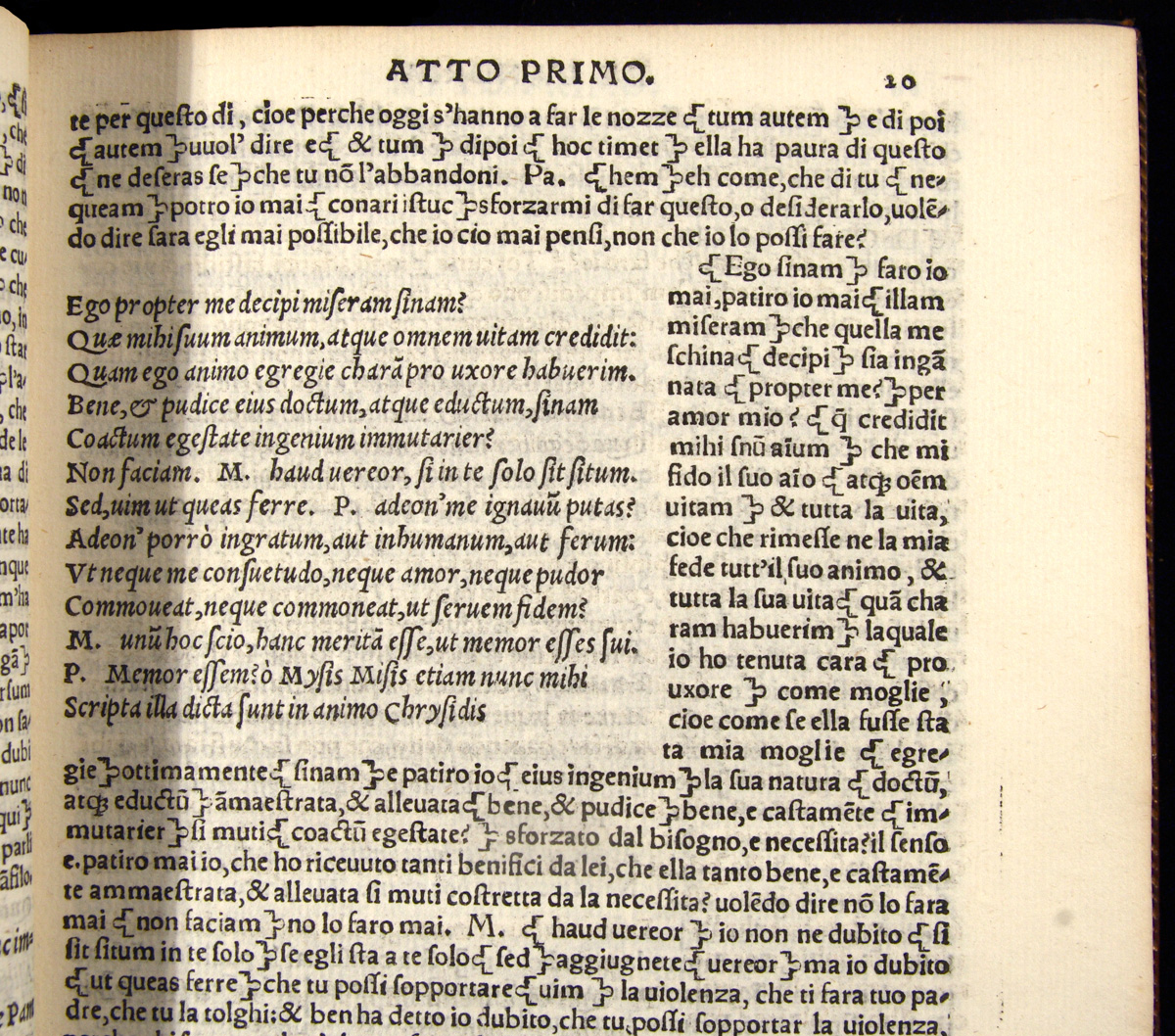
Fabrini claimed more. In Fabrini's book, but not in Abril's imitation of it, Terence was a vehicle for language study generally, not merely of Latin but of the vernacular as well. Of course, literary Tuscan was an acquired skill for most Italian writers of the period, and the best terms of linguistic analysis available were still in fact those of Latin grammar. Thus, in the second part of his book, what Fabrini entitled "the interpretation of vernacular and Latin language," he expressly claimed that his is not an elementary grammar but one for those who already know the first principles of Latin. Apparently, however, he imagined that once the student arrives at the intermediate-Latin stage of reading Terence, he should proceed to study Latin and Tuscan by mutual translation. In his dedicatory letter to Cosimo de' Medici he mounted a spirited defense of translation as a cultural and educational activity. His claim in providing a translation manual along with his text of Terence was that the rules for nouns and verbs are common to both languages and that the mastery of each expressive need in either tongue is achieved by understanding the equivalent expressions in the other. So a typical subject heading is "Concerning vernacular infinitives, and which of them have to be translated as Latin infinitives and which as Latin gerunds." (79) "All these things," he continued, "are demonstrated with general rules and confirmed with the authority of Latin writers, especially with the authority of Cicero and Terence." (80)
While Fabrini's grammar was a sort of translation manual, he compiled the appendix of usages which follows as a compositional aid. It was an index to ideas and themes in Terence, based directly on his commentary. The indexing terms were listed in Tuscan with page citations to the Latin text, with the intention of aiding the reader in composing Latin prose or finding passages to quote. The appendix had its own dedicatory letters (three of them!) in which Fabrini explained that he composed this index for the use of a certain diplomat who felt the need of an aid to finding Latin phrases appropriate for conversation and oratory in foreign lands. Fabrini had already prepared a similar compositional manual based on Cicero's prose, but the Terence seemed an easier and more urgent work to publish since the diplomat had virtually all of Cicero by heart. Terence was both shorter and more directly useful, then, for someone who wants to mine the classics for elegant phrases appropriate to speechmaking. So much for Fabrini's expressed intentions. Given that the index is dependent on his own annotated text of Terence and that it is listed on the title pages of those editions where it appears, we may also suspect that it was also added for the sake of marketing them. Certainly, Fabrini's Terence was one of the most successful of the century. (81)
NOTES
- Open Bibliography
- (75) Fabrini was not alone in his ambitions to teach by translation of Terence; indeed his inspiration may have been French translations and studies of Terence by Etienne Dolet and Charles Estienne in the early fifteen forties; see Fabre 1995, 70. Further on Fabrini, Zaccaria 1993.
- (76) These claims appear on every edition from the first, Terence 1548, onward. Fabrini's work was published in Venice both by the Sessa firm and by that of Vincenzo Valgrisi. They make slightly different claims on their title pages, as can be seen in Valgrisi editions of 1548, 1558 and 1567 and Sessa printings of 1556, 1570, 1580 and 1594.
- (77) This last claim appeared first in Terence 1556, still as far as we know supervised directly by Fabrini. Compare Kaspar Schoppe's tri-lingual grammars, discussed in section 2.19.
- (78) Terence 1583, fol. ¶ 2v-7r. On Abril, Morreale de Castro 1949. esp. 56-59, 178-80; Breva-Claramonte 1990, esp. 279-282.
- (79) … di tutti gli infiniti volgari, e quali hanno à esser infiniti Latini, e quali gerundi.
- (80) … le qual cose tutte sono mostrate con regole generali, e confirmate con l'autorità de gli scrittori latini, & massimamente con l'autorità di Tullio, e di Terentio.
- (81) At least eleven editions before 1600.